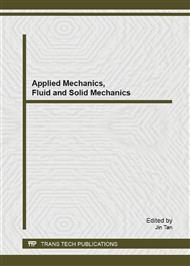p.64
p.69
p.77
p.83
p.89
p.95
p.101
p.107
p.115
Comparative Study on the Reynolds Shear Stress in CTAC Drag-Reducing Flow by Experiment and DNS
Abstract:
In this paper, both experimental and numerical studies were carried out for fully developed water and CTAC solution channel flows in order to understand the different distribution of Reynolds shear stress appeared in experiments and DNS. Quadrant analysis were carried out according to the categorization of turbulent fluid motions. The studies indicates that the elastic force of the additives' structures will cause the fluids moving back and forth in the wall-normal direction in experiment and the symmetric distribution of Reynolds shear stress in all quadrants. However, Giesekus model in DNS only applies the elastic force inhibiting the transverse fluctuations.
Info:
Periodical:
Pages:
89-94
Citation:
Online since:
December 2013
Authors:
Keywords:
Price:
Сopyright:
© 2014 Trans Tech Publications Ltd. All Rights Reserved
Share:
Citation:


